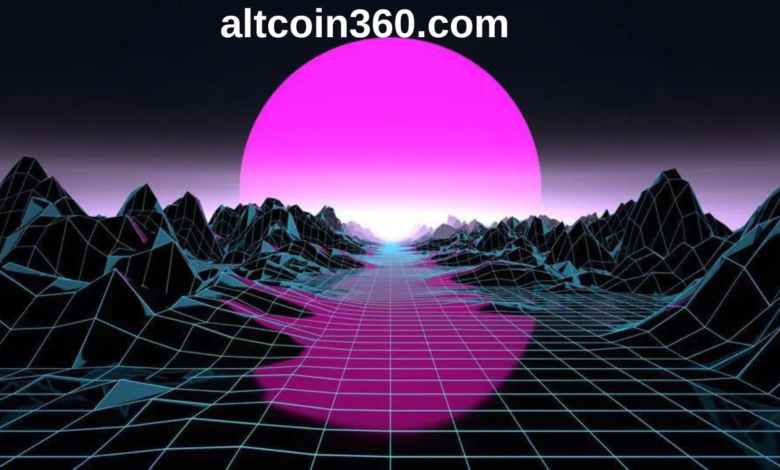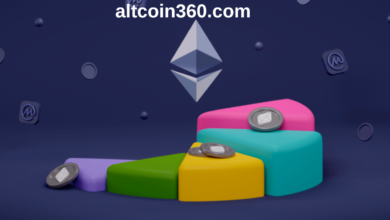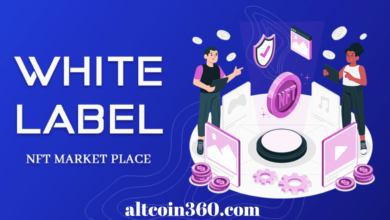Non-Fungible Tokens (NFTs) Explained: The Digital Revolution of Ownership

Non-Fungible Tokens, or NFTs, have emerged as a groundbreaking phenomenon in the world of digital assets and ownership. These unique digital tokens have captured the attention of artists, collectors, investors, and technology enthusiasts alike. In this article, we will explore the concept of NFTs, how they work, their applications, their impact on various industries, and the controversies surrounding them.
Understanding Non-Fungible Tokens
Fungibility vs. Non-Fungibility
To comprehend NFTs, it’s essential to understand the difference between fungible and non-fungible assets. Fungible assets are interchangeable with one another and have equal value, like cryptocurrencies such as Bitcoin or traditional currencies like the US dollar. You can trade one Bitcoin for another, and the value remains the same.
Non-fungible assets, on the other hand, are unique and not interchangeable. Each non-fungible item has distinct properties, making it one-of-a-kind. Examples of non-fungible assets include real estate, collectibles, and, in the digital realm, NFTs.
What Is an NFT?
An NFT is a digital token that represents ownership or proof of authenticity of a unique item or piece of content using blockchain technology. These items can be digital art, music, videos, virtual real estate, in-game items, or any other digital or physical object. NFTs are typically created, bought, and sold on blockchain platforms, most commonly Ethereum.
The uniqueness and authenticity of an NFT are verified by the blockchain, making it nearly impossible to counterfeit or manipulate. This technology has opened the door to a new era of digital ownership and has profound implications across various domains.
How Do NFTs Work?
NFTs are built on blockchain technology, which is a decentralized and secure ledger that records transactions across a network of computers. Here’s how NFTs work:
- Creation: The process begins with an artist, content creator, or developer creating a digital item that they want to tokenize as an NFT. This can be a piece of digital art, a collectible, music, a video, or anything else digital.
- Tokenization: The digital item is then “tokenized” into an NFT by registering it on a blockchain platform. This creates a unique digital certificate of ownership, complete with metadata that includes information about the item, its creator, and its ownership history.
- Minting: Minting is the process of creating and uploading an NFT to a blockchain. This process requires a small fee in cryptocurrency and typically involves setting parameters such as royalties for the creator and any future sales.
- Ownership and Transactions: Once an NFT is minted, it can be bought, sold, or traded by anyone interested. Ownership is recorded on the blockchain, making it easy to verify the authenticity of an NFT and its ownership history.
- Transparency and Security: The blockchain ensures transparency and security. It’s decentralized, meaning that no single entity has control, and transactions are immutable, making it extremely difficult to counterfeit or manipulate NFTs.
- Interoperability: NFTs are not limited to a single platform. They can be bought and sold across various marketplaces and used in different applications.
Applications of NFTs
NFTs have gained traction in various industries, each with its unique applications and implications:
1. Art and Collectibles:
NFTs have revolutionized the art world, allowing artists to sell digital art directly to collectors. Artists receive a percentage of sales whenever their NFT is resold, providing a new revenue stream.
2. Music:
Musicians have embraced NFTs as a way to sell music directly to fans. NFTs can include exclusive content, concert tickets, and more.
3. Gaming:
In the gaming industry, NFTs are used to represent in-game items and assets. Gamers can buy, sell, or trade these items, bringing real-world value to virtual goods.
4. Real Estate:
NFTs are utilized to represent ownership of virtual real estate in virtual worlds and metaverse platforms, providing unique investment opportunities.
5. Collectibles:
Digital collectibles, such as trading cards, virtual pets, and more, have become popular NFT items.
6. Fashion and Luxury:
Luxury brands have experimented with NFTs, creating digital versions of their products for collectors.
7. Authentication and Provenance:
NFTs are also used to verify the authenticity and provenance of physical items, such as artwork and luxury goods, by associating them with digital certificates.
8. Content Monetization:
Content creators and influencers use NFTs to monetize their content by offering exclusive access to their audience.
Impact and Controversies
The rise of NFTs has been met with both excitement and criticism:
Positive Impacts:
- Empowerment of Creators: NFTs offer creators, including artists, musicians, and writers, a new way to monetize their work directly without intermediaries.
- Provenance and Ownership: NFTs provide a secure way to verify the authenticity and ownership of digital and physical items.
- Digital Economies: NFTs have the potential to create robust digital economies within games and virtual worlds, offering new opportunities for entrepreneurship.
- Innovation: The NFT space has sparked innovation in various industries, including art, music, and entertainment.
Controversies:
- Environmental Concerns: The energy consumption of blockchain networks, particularly Ethereum, has raised environmental concerns. The process of minting and trading NFTs consumes a significant amount of electricity.
- Speculation and Bubble: Some argue that the NFT market is driven by speculation and could be a bubble that may burst, leaving investors with overpriced and potentially worthless digital assets.
- Copyright and Plagiarism: The ownership of digital assets and intellectual property rights in the NFT space is complex and can lead to copyright issues and plagiarism concerns.
- Exclusivity and Inequality: NFTs have been criticized for reinforcing exclusivity and wealth inequality, as only those with significant capital can participate in the market.
The Future of NFTs
The future of NFTs holds immense promise and potential, along with challenges that must be addressed. Here are some predictions and considerations:
1. Environmental Sustainability:
To address environmental concerns, blockchain networks are exploring more energy-efficient consensus mechanisms, such as Ethereum’s transition to a proof-of-stake system.
2. Standardization:
Standardization in the NFT space will provide greater clarity on ownership, copyright, and interoperability between different platforms.
3. Integration with Physical Assets:
NFTs could become a common way to verify the authenticity and ownership of physical assets like luxury goods and artwork.
4. Education and Regulation:
The industry will likely see increased education and regulation to address fraud, plagiarism, and speculation.
5. Mass Adoption:
NFTs have the potential to reach mass adoption as more industries and individuals discover their utility and value.
In conclusion, Non-Fungible Tokens, or NFTs, represent





1E5TMy21DM2cR13sQbLukgKBkR3ZSaRbeB
Tech to Trick There is definately a lot to find out about this subject. I like all the points you made
Simply Sseven I like the efforts you have put in this, regards for all the great content.
Your point of view caught my eye and was very interesting. Thanks. I have a question for you. https://accounts.binance.com/es/register-person?ref=T7KCZASX
Smartcric You’re so awesome! I don’t believe I have read a single thing like that before. So great to find someone with some original thoughts on this topic. Really.. thank you for starting this up. This website is something that is needed on the internet, someone with a little originality!
I don’t think the title of your article matches the content lol. Just kidding, mainly because I had some doubts after reading the article.